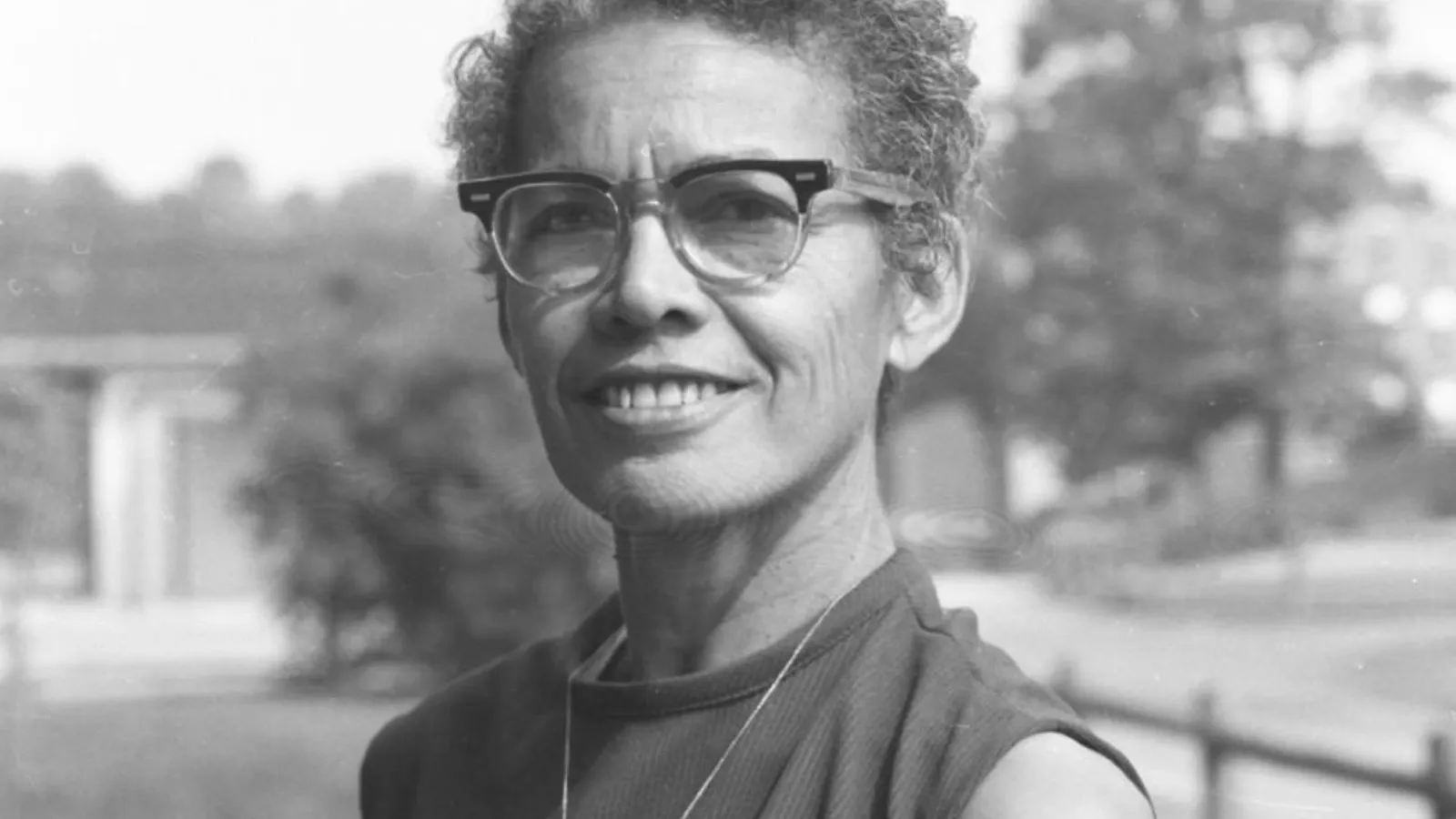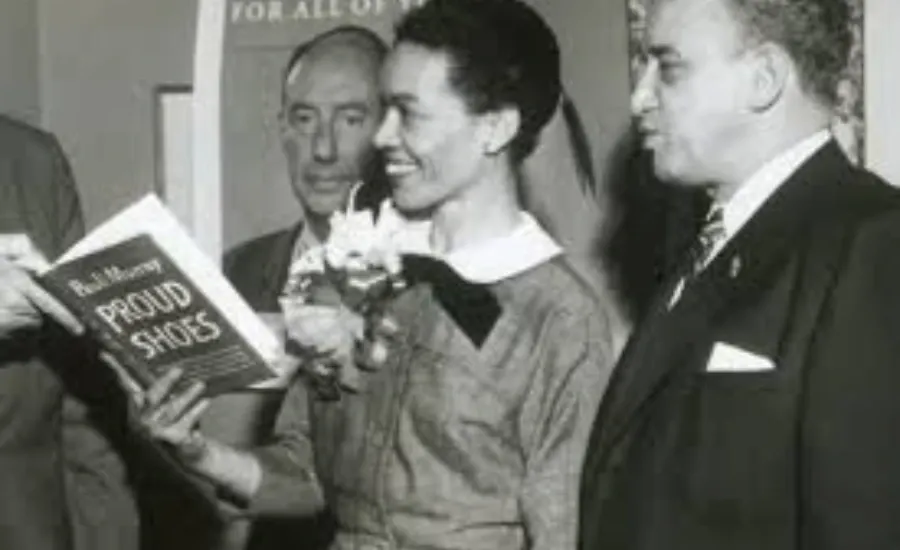
The Unsung Strategist: How Pauli Murray's Legal Brilliance Paved the Way for Today's Working Women
When you walk into your office tomorrow morning, take a moment to appreciate something most of us take for granted: your legal right to be there. That right didn't just happen—it was fought for, strategized, and won by brilliant legal minds who saw injustice and refused to accept it. One of the most important of these minds belonged to someone you've probably never heard of: Pauli Murray.
If you've ever filed a complaint about workplace discrimination, negotiated for equal pay, or simply expected to be judged on your merits rather than your gender, you owe a debt to Pauli Murray. This remarkable legal strategist didn't just fight against discrimination—they revolutionized how we think about civil rights law, creating the intellectual framework that still protects working women today.
The Woman Who Saw What Others Couldn't
Born Anna Pauline Murray in 1910 in Baltimore, Maryland, Pauli Murray was raised by their grandparents in Durham, North Carolina, after their mother's death. From an early age, Murray displayed the kind of analytical mind that would later reshape American law. But their path to legal prominence was anything but straightforward.
In 1938, Murray applied to the University of North Carolina's graduate school and was rejected—not because of their grades or qualifications, but because they were Black. This rejection could have been a dead end, but for Murray, it became a catalyst. They wrote to NAACP leader Thurgood Marshall, not asking for help, but proposing a legal strategy. At just 28 years old, Murray was already thinking like the constitutional scholar they would become.
"The Negro and the poor white are fighting for the same thing," Murray would later write, demonstrating an intersectional understanding of oppression that was decades ahead of its time. This wasn't just academic theory; it was strategic thinking that would eventually transform how discrimination cases were argued in court.
The Birth of a Legal Revolution
Murray's breakthrough came during their time at Howard University Law School, where they graduated first in their class in 1944. But it was their 1950 book "States' Laws on Race and Color" that truly changed the game. This wasn't just a legal text, but a strategic roadmap that Thurgood Marshall and his team would use to argue the landmark case Brown v. Board of Education.
The book meticulously documented every state law that enforced racial segregation, creating an irrefutable case for the inherent inequality of "separate but equal." Murray's research became the foundation for the legal arguments that would end school segregation. But perhaps more importantly for working women, it established a template for how systematic discrimination could be challenged through strategic legal action.
Think about this the next time you're researching salary data to negotiate a raise—Murray pioneered the idea that comprehensive documentation of discriminatory practices could be used as powerful legal ammunition. They understood that feelings of unfairness needed to be backed by cold, hard data to create lasting change.
The Jane Crow Connection: When Murray Predicted #MeToo
Here's where Murray's story becomes directly relevant to every woman reading this: they were the first legal scholar to draw explicit connections between racial discrimination and sex discrimination. In 1965, Murray co-authored an article titled "Jane Crow and the Law" that argued the same legal principles used to fight racial discrimination should apply to gender discrimination.
Murray was making a strategic argument that would revolutionize how we think about workplace rights. They recognized that the Civil Rights Act of 1964, which prohibited employment discrimination based on race, could and should be extended to protect women in the workplace.

"The lesson of history that all human rights are indivisible and that the failure to adhere to this principle jeopardizes the rights of all is particularly applicable here," Murray wrote. In other words, they understood that fighting for one group's rights strengthens the legal framework that protects everyone—a principle that's more relevant than ever in today's workplace.
The Strategic Mind Behind Title VII
When Congress was debating the Civil Rights Act of 1964, the inclusion of "sex" in Title VII (the section dealing with employment discrimination) was initially seen as a joke—literally. Congressman Howard Smith added "sex" to the bill partly as a way to kill it, assuming that the idea of protecting women's workplace rights was so absurd that it would doom the entire legislation.
But Murray and other legal strategists had been preparing for this moment for years. Murray's earlier work had established the intellectual foundation for why sex discrimination should be treated with the same legal seriousness as racial discrimination. When feminists like Betty Friedan needed legal arguments to support the enforcement of Title VII's sex discrimination provisions, they turned to Murray's work.
This is strategic thinking at its finest—Murray hadn't just identified a problem, they had spent years building the legal framework that would eventually solve it. For modern working women, this offers a powerful lesson: systemic change requires both vision and methodical preparation.
Breaking Barriers in Real Time
Murray's influence on workplace rights wasn't just theoretical. In 1965, they helped found the National Organization for Women (NOW), serving on its first board of directors. But even more significantly, Murray was simultaneously breaking barriers in their own career.
In 1965, Murray became the first Black person to earn a Doctor of Juridical Science from Yale Law School. Their dissertation, "Roots of the Racial Crisis: Prologue to Policy," continued to develop the legal strategies that would be used in countless discrimination cases. But Murray didn't stop at academic achievement—they put their theories into practice.
As a practicing attorney, Murray took on cases that established important precedents for workplace rights. They understood that legal theory only mattered if it could be successfully applied in real courtrooms, protecting real people facing real discrimination.
The Intersectional Pioneer
Perhaps Murray's most profound contribution to modern workplace rights was their understanding of what we now call intersectionality—the idea that people face multiple, overlapping forms of discrimination. Murray didn't just fight racism or sexism in isolation; they understood how these systems of oppression worked together.
This insight is crucial for today's working women, especially women of color, LGBTQ+ women, and women with disabilities who often face compound discrimination. Murray's legal strategies recognized that anti-discrimination law needed to account for these complex realities. They were arguing intersectional cases decades before the term was even coined.
Murray's approach was always to look for the broader patterns, to connect individual experiences to systemic issues, and to build coalitions across different groups facing discrimination. These strategies remain just as relevant in today's workplace.
From Courtroom to Cathedral: A Life of Firsts
In 1977, at age 66, Murray achieved another historic first: they became the first Black woman ordained as an Episcopal priest. This might seem unrelated to workplace rights, but it demonstrates something important about Murray's approach to breaking barriers—they never stopped pushing boundaries, and they understood that representation matters in every field.
Murray's ordination came just 13 years before the Americans with Disabilities Act and 24 years before the first woman became Secretary of State. They were consistently ahead of their time, showing what was possible when brilliant minds refused to accept limitations.
Lessons for Today's Working Women
So what can Murray's legacy teach us about navigating today's workplace? Their approach offers several timeless strategies:
Document Everything
Murray's success came from meticulous research and documentation. Whether you're building a case for promotion or addressing workplace discrimination, comprehensive documentation is still your best tool.
Think Systematically
Murray didn't just fight individual battles—they identified systemic patterns and developed strategies to address root causes. When facing workplace challenges, look for broader patterns that might affect others, too.
Build Coalitions
Murray understood that lasting change requires building alliances across different groups. In today's workplace, this might mean mentoring others, joining professional organizations, or supporting colleagues facing different but related challenges.
Play the Long Game
Murray's most important contributions took years or even decades to fully realize. Career advancement and systemic change both require patience and persistent effort.
Combine Theory with Practice
Murray was both a brilliant legal theorist and an effective practitioner. Whether you're developing expertise in your field or advocating for change, make sure you can translate ideas into action.
The Continuing Fight
Today's workplace still isn't equal—women earn 82 cents for every dollar earned by men, and the gap is even wider for women of color. Sexual harassment remains pervasive, and women are still underrepresented in leadership positions across industries. But the legal framework Murray helped create gives us powerful tools to fight these ongoing inequities.
Every time someone files an EEOC complaint, negotiates for equal pay, or challenges discriminatory practices, they're using legal strategies that trace back to Murray's groundbreaking work. The #MeToo movement, pay equity legislation, and corporate diversity initiatives all build on foundations that Murray helped establish.
Remembering the Unsung Strategist
Pauli Murray died in 1985, but their influence on workplace rights continues to grow. In 2012, Yale University named a residential college after Murray, and in 2017, they were commemorated with a statue at the National Cathedral in Washington, D.C.
But perhaps the most fitting tribute to Murray's legacy is the millions of women who walk into workplaces every day knowing they have legal rights and recourse if those rights are violated. Every woman who's been promoted on merit rather than being passed over because of her gender, every mother who's taken protected parental leave, every employee who's received equal pay—they all benefit from the legal framework Murray helped create.
As we continue fighting for true workplace equality, we can draw inspiration from Murray's combination of intellectual rigor, strategic thinking, and relentless commitment to justice. They showed us that changing the world requires both vision and methodical preparation, both individual courage and collective action.
The next time you're facing a workplace challenge—whether it's advocating for yourself, supporting a colleague, or pushing for systemic change—remember Pauli Murray. Remember that one person with brilliant strategic thinking and persistent determination really can reshape the legal landscape for generations of women to come.
After all, if one person could help end school segregation, establish the legal basis for workplace discrimination law, and break barriers in multiple professions, imagine what we can accomplish when we work together.
Photos: Brandeis University, National Museum of African American History and Culture






